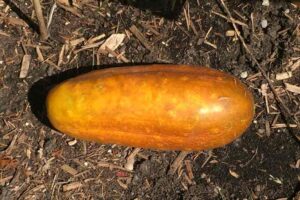
A gallon of lavender oil is worth quite a bit of money, depending on the type and quality of the lavender oil. Lavender oil is derived from the flowering tops of the lavender plant, and is used in a variety of products, from aromatherapy to beauty products.
High-quality lavender oil can be quite expensive, as it is often sourced from France and other parts of Europe. On average, a gallon of lavender oil can range anywhere from $100 to $400, depending on the brand and quality.
Overview of Lavender Oil
Lavender oil has been used for centuries to provide a multitude of therapeutic benefits. Its calming and relaxing effects make it a popular choice for aromatherapy, while its antiseptic properties make it an ideal choice for treating cuts and scrapes.
It is also known to improve mood, reduce stress, and promote better sleep. Lavender oil can be used in a variety of ways, such as in massage oils, facial creams, diffusers, and candles. Additionally, lavender is often used in baking and cooking to add a subtle flavor to food.
From its calming aroma to its versatile uses, lavender oil is certainly a beneficial oil to have in your home.
Types of Lavender Oil
Lavender oil is one of the most popular essential oils in aromatherapy, valued for its calming, soothing, and sedative effects. Lavender oil can be derived from various species of lavender plants, each of which gives the oil a unique chemical profile and therapeutic properties. Here are some of the most common types of lavender oil:
- Lavandula Angustifolia Oil: This is also known as “True Lavender Oil” or “English Lavender Oil”. It’s the most common type of lavender oil and is prized for its rich, sweet, floral aroma. It’s commonly used in aromatherapy for its calming and relaxing effects. It’s also used for skincare because of its gentle and soothing properties.
- Lavandula Latifolia Oil: Also known as “Spike Lavender Oil,” this lavender oil has a stronger, more camphor-like scent. It’s often used for respiratory issues and muscular pain due to its higher levels of camphor and 1,8-cineole.
- Lavandula Hybrida Oil: Also known as “Lavandin Oil,” this is a hybrid of True Lavender and Spike Lavender. Lavandin oil has a stronger, more robust aroma than True Lavender and is often used in soaps, perfumes, and other cosmetic products.
- Lavandula Stoechas Oil: Known as “Spanish Lavender Oil,” it has a unique and intense aroma, quite different from the sweet, floral scent associated with English Lavender. It has a higher cineole and camphor content, which lends itself to more antiseptic and expectorant properties.
- Lavandula X Intermedia Oil: This is another hybrid variety, also known as “Dutch Lavender Oil”. It is cultivated extensively for its high oil yield and is commonly used in the perfume industry.
- Lavandula Officinalis Oil: This is another name for the essential oil derived from Lavandula angustifolia, or true lavender. Some suppliers use this name to denote the essential oil’s traditional uses in herbal medicine.
Different species of lavender and their essential oils will have varying degrees of effectiveness, depending on the use case. Always choose the appropriate lavender oil type for your needs, and use essential oils safely, considering their contraindications and potential skin sensitivities.
Factors Influencing the Value of Lavender Oil
There are several factors that can influence the value of lavender oil. Here are some of the main ones:
- Species: Different species of lavender yield oils with different properties and scents. The species of lavender used can significantly affect the oil’s value. For instance, Lavandula angustifolia, known as true or English lavender, tends to yield a high-quality oil that’s often more expensive than others.
- Cultivation Practices: How the lavender is grown can greatly influence the oil’s value. Organic cultivation without the use of pesticides or synthetic fertilizers can lead to a higher-quality oil that’s more valuable. Similarly, lavender grown in its native environment may yield a higher-quality oil than lavender grown in less ideal conditions.
- Distillation Process: The method and quality of the distillation process play a crucial role in the final quality of the lavender oil. The use of heat in the steam distillation process can degrade the oil’s quality. The best lavender oil is usually produced using low heat and low pressure.
- Purity: Pure, unadulterated lavender oil is more valuable than oil that’s been diluted or mixed with other oils or synthetic ingredients. Pure oil offers the full therapeutic benefits of lavender and is free from potentially harmful additives.
- Supply and Demand: Like any commodity, the value of lavender oil can be significantly influenced by supply and demand. Factors affecting supply might include crop failures, while demand can be influenced by trends in aromatherapy, cosmetics, or natural health products.
- Packaging and Branding: The way the oil is presented can also influence its perceived value. Higher-end brands might package their oils in dark-colored glass bottles to protect the oil from light degradation, use high-quality droppers for precision dispensing, and invest in attractive labeling and packaging.
- Sustainability Practices: In a world increasingly concerned about environmental impact, lavender oil produced using sustainable farming practices, ethical labor practices, and environmentally friendly packaging may command a premium price.
While these factors can give you some indication of the oil’s value, they don’t necessarily guarantee that the oil will work for your specific needs. Always do your own research and consider consulting with a professional before using any essential oil for therapeutic purposes.
Cost of Production and Packaging
Cost of production and packaging is an important consideration for any business. It is the sum of all the costs associated with producing a product, including the cost of raw materials, labor, shipping, and packaging.
The cost of production and packaging can vary greatly depending on the type of product being produced, the quality of materials used, and the quantity of items produced.
By understanding the cost of production and packaging, businesses can make informed decisions about their product pricing, ensuring that they are both competitive and profitable.
Additionally, understanding the cost of production and packaging can help businesses identify areas for cost savings, which then can be reinvested into other areas of the business.
Market Value of Lavender Oil
However, the lavender oil market has been showing consistent growth due to increasing demand from various industries including cosmetics, skincare, aromatherapy, and pharmaceuticals.
As per the general trends observed:
- Aromatherapy and Personal Care Products: Lavender oil is widely used in aromatherapy and skincare products for its calming and skin-soothing benefits. The rising popularity of natural and organic personal care products has been driving up demand for high-quality lavender oil.
- Pharmaceuticals: The oil is also used in pharmaceutical applications due to its antiseptic and anti-inflammatory properties. It’s used in treatments for minor burns, fungal infections, anxiety, insomnia, depression, and other conditions.
- Food and Beverage: The use of lavender oil in food and beverages has also been growing, with lavender being featured in everything from teas and lemonades to baked goods and gourmet dishes.
- Perfumery: The perfume industry is a significant consumer of lavender oil. Lavender’s distinct floral, fresh aroma is widely used in creating various fragrances.
As with any commodity, prices for lavender oil can vary widely depending on factors such as the species of lavender, the quality and purity of the oil, the method of extraction, and the current supply and demand dynamics in the market. Also, consider that prices may vary by region due to factors like local demand, import costs, and regulations.
For the most accurate and up-to-date information on the market value of lavender oil, it would be best to look up recent market research reports, contacting suppliers or distributors directly, or consulting with an industry expert.
FAQs About the How Much Is A Gallon Of Lavender Oil Worth
How much does a gallon of lavender oil cost?
Answer: The cost of a gallon of lavender oil can vary depending on the brand and quality. Generally, a gallon of lavender oil can range from $50-$200.
What is the shelf life of a gallon of lavender oil?
Answer: A gallon of lavender oil can last up to 2 years if stored in a cool, dry place away from direct sunlight.
Is a gallon of lavender oil worth the investment?
Answer: Absolutely! Lavender oil can provide a number of health benefits including promoting relaxation, improving sleep, and reducing stress. Investing in a gallon of lavender oil is worth it for the many benefits it can provide.
Conclusion
Lastly, the cost of a gallon of lavender oil can vary greatly depending on the type and quality of the oil. Generally speaking, a gallon of lavender oil can range in price from around $60 to upwards of $200. Purchasing in bulk can often save you money, but it is important to be sure of the quality before making a larger purchase.







